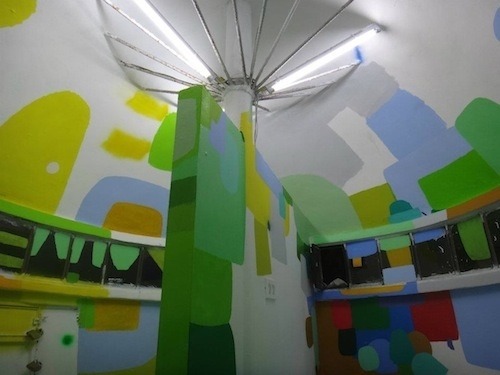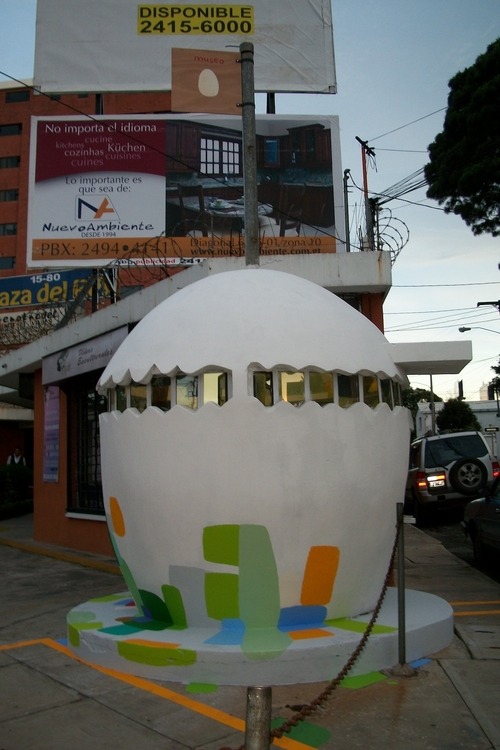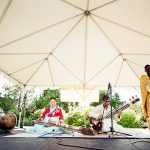Con Edison Immigrant Artist Program Newsletter, Issue No. 39
Featured Organization: El Nuevo Museo de Arte Contemporáneo, Guatemala (NuMu)
This month we feature El Nuevo Museo de Arte Contemporáneo, Guatemala (NuMu), a collaborative project between Stefan Benchoam and Jessica Kairé (Alum of the 2010 NYFA Mentoring Program for Immigrant Artists) that has emerged as a result of the lack of museums in Guatemala that support, exhibit and document contemporary local and international art. NuMu is the first museum in Guatemala exclusively dedicated to contemporary art. NYFA IAP Program Officer Karen Demavivas and Intern Aya Sato asked Kairé about the birth and direction of the museum.
You developed El Nuevo Museo de Arte Contemporáneo (NuMu) with Stefan Benchoam. “Over three years ago, a series of repeated conversations took place between us, after realizing the need of a museum in Guatemala that would promote, exhibit and document contemporary local and international art.” How did those conversations come about, and what do you share with Stefan that allowed you to go into this venture together?
Stefan and I grew up together, but I think we found new common grounds when getting involved with the local art scene, around the same time. We share similar intentions for art-making, and our approach is very much influenced by multidisciplinary practices, collaborations, and new technologies, like the internet. In several ways, this approach is quite different from the previous generation of Guatemalan artists.
We’ve often discussed the richness of the local (Guatemalan) art community versus the shortage of institutions that can offer the necessary support to realize possible artistic projects of great value. We began talking about the need for a new museum in Guatemala, the very first that could showcase contemporary art and fully support artists. We were also interested in documenting and archiving Guatemalan art, and making it accessible to everyone.
Could you explain your journey in finding the location for this museum?
When we first conceived the idea for a museum, we considered creating a museum based solely on the web, to defray costs, but our conversations gradually diminished. After some time passed, we came across a sign that read “for rent” across the unique space that now hosts NuMu. We signed a one-year lease right away.
NuMu’s physical space, located in Guatemala City, measures approximately 2 x 2.5 meters and has the shape of an egg, since it was originally designed for an egg-selling business express style. Over the years, this structure has become iconic within the city and it’s probably the only one of its kind in the world.
Could you talk about who is exhibited at NuMu? How do you split your programming between local and international art? What do you find is important about having both?
Currently on view is the first exhibition of the season, Federico Herrero’s wonderful site-specific pictoric intervention, that expands in and out of the incredible egg-shaped structure of tropical design (that hosts our small yet grand museum), and then extends towards the neighboring public spaces. Herrero (Costa Rica, 1978) is considered on of the most important artists in Latin American contemporary art. In 2001, he received a Golden Lion Award for Best Young Artist at the 49th Venice Biennial.
More than anything, we are interested in exhibiting the most challenging and exciting work currently being made out there. We believe that by strategically combining local and international projects, we are creating opportunities for exchange and fruitful collaborations to take place. It’s important to point out that the museum allows for the artists, curators, movers and shakers invited to the space to have absolute freedom to realize their projects as they desire. Our job is to make them feel at home, and support them throughout the process. For us, this is about uniting forces, experimenting, questioning and sharing.
NuMu’s 2012-2013 Program will include four main exhibitions, at least two interdisciplinary activities in between exhibitions and an educational component paired up with each event. All of the activities are free and open to the public, thanks to the kind support of Los Amigos del NuMu.
In what ways has the local community around the museum responded so far, in relation to the appearance of the museum, especially considering its unusual shape and high visibility?
We welcome people to question and challenge our unusual approach. As both museum and artwork, it re-evaluates the general meaning of a museum, and what it means to be a contemporary art museum in the 21st century in both the local context of Guatemala City and the international art scene.
In general, the response has been outstanding, from both the local and international art communities, as well as the neighboring local businesses. NuMu represents a fresh approach to the artist-institution relationship, as well as cultural and employment benefits for the neighborhood. This is an opportunity for those who are unfamiliar with contemporary art to experience it first-hand, any given day of the week. We have a small, yet wonderful staff who live in the neighborhood, including Onelia, a restaurant owner and neighbor, who is responsible for keeping the museum open at its regular hours. We view these neighboring local businesses, cafes and restaurants in particular, as extensions of the museum itself.
Furthermore, we give much thanks to Los Amigos del NuMu (Friends of NuMu) who are a group of people who have supported the project from day one and are generously providing us with not only moral and emotional support but monetary resources as well.

Do you have any plans of cultural exchange between your community of artists in NYC and the community of artists connected with NuMu in Guatemala?
Definitely. Even though our main exhibitions program is set for the current season, we are interested in inviting people from different backgrounds to take part in our interdisciplinary events. These include performance, video and other time-based projects and will be either within the physical space of NuMu, web-based or otherwise site-specific.
Can you share with us any current or upcoming projects you have in relation to the museum?
We are very excited to announce that our second main exhibition of the season will be headed by Emiliano Valdés, who returns to Guatemala after being part of the curatorial staff of dOCUMENTA (13) in Kassel, Germany. Valdés is an architect, curator, co-director of Proyectos Ultravioleta and director of Visual Arts at Centro Cultural de España in Guatemala.
Additionally, as part of this month’s programming, NuMu will present Daily No. 2, a collaborative, web-based project realized between artists, curators, and academics who have been invited by three art spaces: Beta-Local (Puerto Rico), Soma (Mexico) and Proyectos Ultravioleta (Guatemala). This event will take place during the Guatemalan photography festival Foto30 and for one night only through a projection at NuMu. To learn more about Daily, please visit: www.daily.betalocal.org, or follow us on Facebook.





